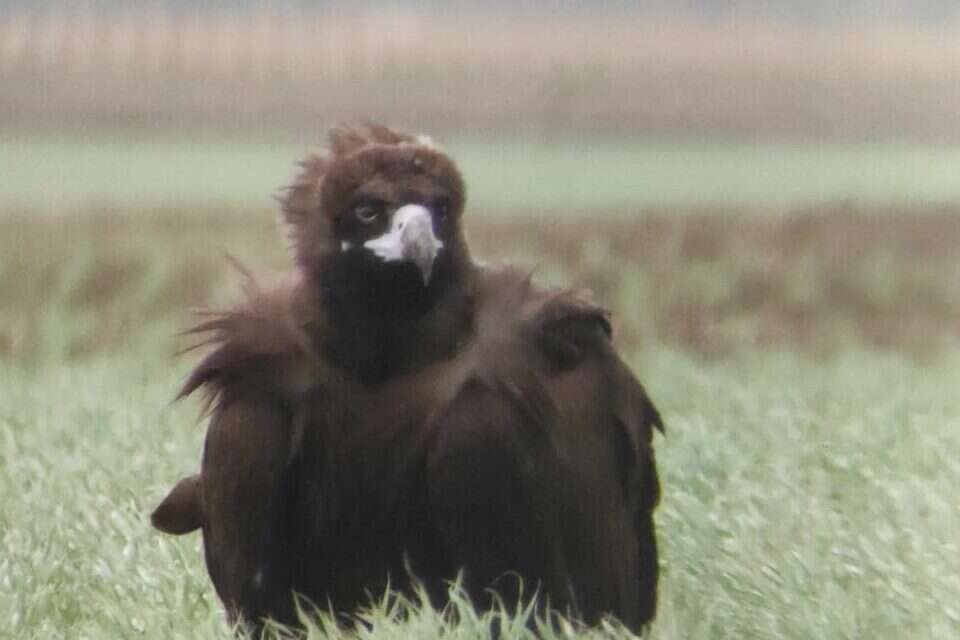The strong winds in the north of the country bring with them surprises, and this afternoon Nadav Israeli, a senior birder at the Society for the Protection of Nature, documented a black azalea, the raptor with the largest and most endangered wingtip.
An Israeli says he came to the azalea following a report from a birder who located her in the fields of the Hula Valley, and at the moment, her condition is unclear: "She worries us mainly because her flight is low and short, and we saw her vomit a bit. For examination and diagnosis, "he says.
Documentation in the fields of the Hula Valley: Black Azania, a rare and special raptor // Photo: Nadav Israeli, The Society for the Protection of Nature
The Society for the Protection of Nature noted that the azalea is a species of carcass eagle, very large and dark, that inhabits wooded mountain slopes and nests on trees.
The color of the adult azalea is fairly uniform dark brown, except for a light dome and bald head.
The young are darker and their feathers are glossy black.
The source is large and very strong.
"Every year, less than 10 wintering goats in Israel, and they roam the country in general and throughout the Galilee, the Golan Heights and Mount Hermon in particular. Until the beginning of the 20th century, it was documented as a nest in the north of the country. It is because of the stormy weather and perhaps because of her health condition, "adds Israeli.
The black azalea observed in the Hula Valley, Photo: Nadav Israeli, The Society for the Protection of Nature
According to the Israeli Birding Portal of the Society for the Protection of Nature, the extinction process of the black azalea probably took place at the beginning of the 20th century and since then no nesting attempts of the species have been observed in the country.
"The chances of the species returning to nest naturally in Israel are estimated to be low, due to the reduced population in southeastern Europe and the state of nature conservation in neighboring countries (Syria, Lebanon and Turkey) that does not allow for a continuous population from Europe to the Middle East."
"On the other hand, the species is given high priority to make an active interface for its return to nature due to its important role in locating and opening carcasses in wooded areas and at the same time, maturing natural and planted forests in the north of the country. "Large turbines with their rapidly rotating blades - also pose a great risk to the nesting population," it was written.
Were we wrong?
Fixed!
If you found an error in the article, we'll be happy for you to share it with us

